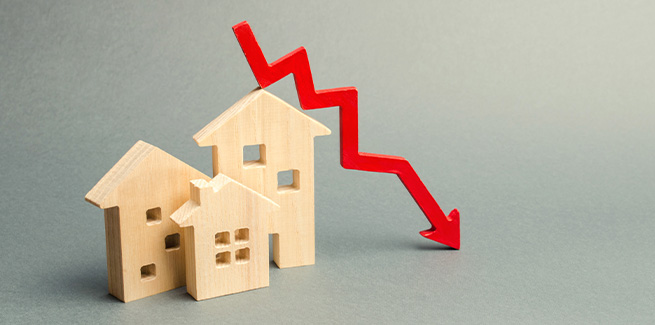Bluestone Home Loans has released its Home Loan Affordability Index for December quarter, revealing the index fell to 93.8 in December 2021 quarter compared to 82.9 in the December 2020 quarter.
The latest result is also 1.2 points higher than the November quarter figure of 92.6 and above the long-term average of 87.0 – which reflects a higher proportion of the average income is required for the average home loan.
Indeed, the boom in house prices has significantly increased the average loan size required by buyers, as wage growth remains stable, fueling the “sharp fall” in affordability.
The Affordability Index has now tracked above the long-term average over seven rolling quarters to December 2021, and although the index eased over October following six consecutive rises this reflected the “transient impact of COVID restrictions”.
While every state saw a calendar year decline in home loan affordability, at the December 2021 quarter, it was NSW and Victoria that were the least affordable states after Victoria fell 18.5 per cent and NSW saw a decline of 17.4 per cent.
Queensland, which saw record house price rise and migration over the year, also felt the pinch of a fall in affordability of 12 per cent, slightly behind was Tasmania that dropped 11 per cent, and the ACT that dropped 8.2 per cent.
Among the other states, South Australia experienced a decline in affordability of 6.7 per cent, while the Northern Territory dropped 7.5 per cent, followed by Western Australia at 2.8 per cent.
Commenting on the latest trends, economist for Bluestone Home Loans, Dr Andrew Wilson, said the strong home price growth over 2021 resulted in buyers borrowing more to keep pace with markets and, with subdued incomes growth and flat interest rates, this resulted in a higher proportion of buyer incomes required for loan repayments.
“Although home loan activity increased sharply again over December following November’s spike in activity, the late year revival reflects a catch-up from the restrictive impact on housing markets of severe spring coronavirus lockdowns – particularly in Sydney, Melbourne and Canberra,” Dr Wilson said.
“Last year’s runaway increase in prices is already moderating as stricter lending conditions from financial institutions place a ceiling on borrowing capacity.
“This has the effect of sidelining buyers, resulting in reduced demand and lower prices growth in the year ahead.”
When looking at higher-priced housing markets, such as Sydney and Melbourne, Dr Wilson said they continue to record a decline in home price growth levels as a consequence of falling affordability reducing buyer activity and the satisfaction of pent-up demand.
According to CoreLogic's home value data in January, house price rises in Sydney (up 0.6 per cent) and Melbourne (0.2 per cent) were marginal compared to the rest of the state, with Brisbane increasing 2.3 per cent and Adelaide up 2.2 per cent in house prices.
Dr Wilson said as Brisbane and Adelaide continue to report strong home buyer activity, this will act to offset overall home lending declines. Although, national volumes are set to be lower than the record levels of 2021.
Looking ahead at owner-occupier and first home buyer loan activity in 2022, he said it will also “likely be lower” than the record levels reported last year.
“But, we expect investor activity – which remains below the average of its long-term total residential loan market share – to continue to rise,” Dr Wilson said.
While the boom in house prices may dip later this year, he said the outlook for the housing market in 2022 remained positive, supported by recovering local economies, an easing of COVID constraints, as well as the resumption of high levels of migration and continuing low-interest rates.
[Related: Home loan affordability improving: Bluestone]
 ;
;
